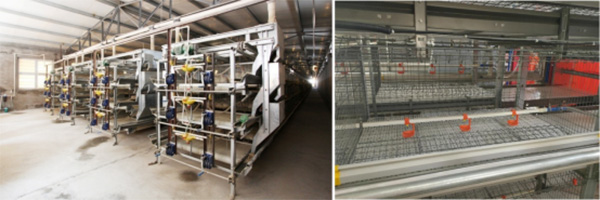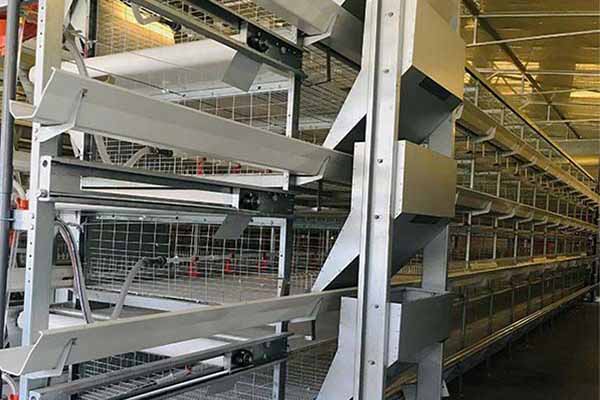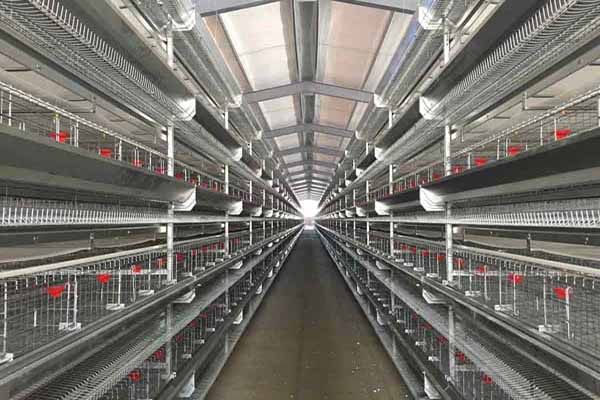Automated Solution for Manure Treatment in Tanzania Chicken Farms
Time : 2025-04-27
Chicken farming has become a vital component of the agricultural landscape in Tanzania, offering both economic opportunities and challenges. One of the most significant challenges faced by chicken farmers is the management of manure, which can be both environmentally harmful and a health risk if not handled properly. In this article, we’ll explore an automated solution for manure treatment in Tanzania chicken farms that not only ensures environmental sustainability but also improves farm efficiency.
Understanding the Challenge
Manure is a byproduct of chicken farming that, if left untreated, can lead to several issues. In Tanzania, where the chicken industry is rapidly growing, the need for an efficient manure treatment system has become more pressing than ever. The challenge lies in finding a solution that is not only effective but also cost-efficient and sustainable.

Environmental Impact
When manure is disposed of inappropriately, it can contribute to water and soil pollution. In Tanzania, with its diverse ecosystems, the impact of untreated manure can be devastating. This is where an automated manure treatment system comes into play.
The Automated Manure Treatment System
The automated manure treatment system is designed to handle the manure produced by chicken farms in Tanzania. Here’s how it works:
Collection
The system starts with the collection of manure. It uses automated conveyors and collection bins to gather the manure from the chicken houses. This not only reduces manual labor but also ensures that the collection process is continuous and efficient.
Pre-Treatment
Once collected, the manure undergoes pre-treatment to remove large particles and separa te solid from liquid. This step is crucial in preparing the manure for the next phase of treatment.
te solid from liquid. This step is crucial in preparing the manure for the next phase of treatment.
Anaerobic Digestion
The heart of the automated system is the anaerobic digestion process. This biological process breaks down the organic matter in the manure without the presence of oxygen. The resulting biogas can be used for on-farm energy needs, reducing the farm’s reliance on external energy sources.
< h3>Post-Treatment
h3>Post-Treatment
After anaerobic digestion, the remaining material is treated further to ensure it is pathogen-free and suitable for use as organic fertilizer. This step involves composting and pasteurization processes.
Recycling and Utilization
The end product of the treatment process is a high-quality organic fertilizer that can be used on the farm or sold to other farmers. This not only closes the nutrient cycle on the farm but also generates additional income for the farmer.
Benefits of the Automated Solution
Implementing an automated manure treatment system in Tanzania chicken farms offers numerous benefits:
Environmental Protection
By reducing water and soil pollution, the system helps preserve Tanzania’s rich ecosystems and natural resources.
Health and Safety
Proper manure treatment minimizes the risk of disease transmission, both to farm workers and to the chickens themselves.
Economic Advantages
The system can generate biogas for on-farm use, reducing energy costs. Additionally, the sale of organic fertilizer can provide extra income for farmers.
Resource Efficiency
By recycling the manure into a valuable resource, the system promotes sustainable agricultural practices.
Conclusion
As the chicken industry in Tanzania continues to grow, the need for an efficient manure treatment solution is more critical than ever. The automated solution for manure treatment offers a practical, sustainable, and economically viable solution to a common challenge faced by chicken farmers. By adopting this technology, farmers can not only protect the environment but also improve their operational efficiency and financial returns.











